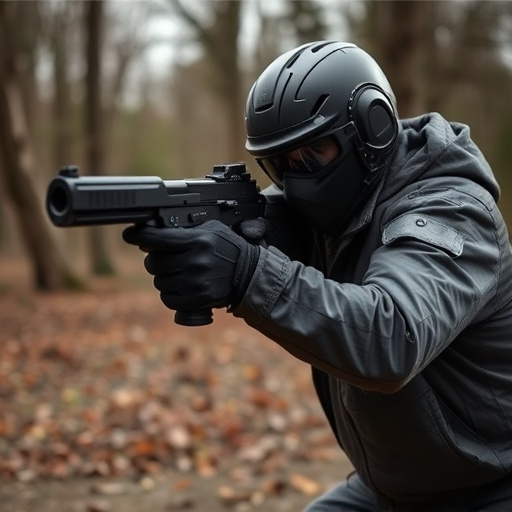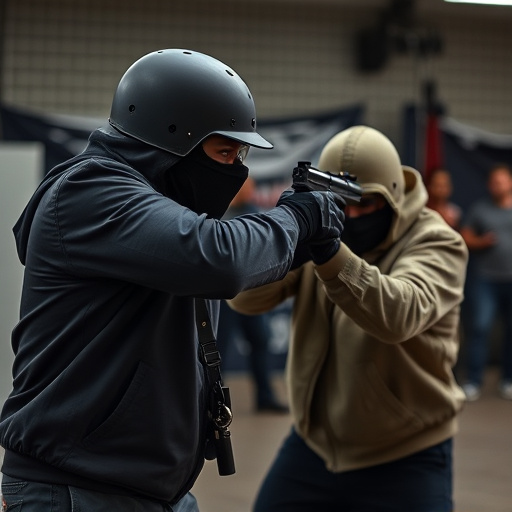The duration of muscle incapacitation from stun guns varies (5-15 minutes) based on power output, targeted areas, and individual health. Best safety features, like high voltage, wide contact area, and precise design, minimize this time, balancing effectiveness with user safety. Key safety elements in top models include reliable switches, durable construction, impact resistance, and LED flashlights for enhanced visibility and functionality during critical situations.
In today’s world, understanding the duration of muscle incapacitation from stun guns is crucial for self-defense and safety. This comprehensive guide delves into the science behind muscle incapacitation, exploring how long it typically lasts and the factors influencing its effectiveness. We also highlight the importance of best safety features in stun guns to ensure optimal performance and reliability. By understanding these key aspects, users can make informed decisions when choosing self-defense tools.
- Understanding Muscle Incapitation: How Long Does It Last?
- Factors Affecting Stun Gun Efficacy and Duration
- Best Safety Features in Stun Guns for Enhanced Effectiveness
Understanding Muscle Incapitation: How Long Does It Last?

Understanding Muscle Incapitation: How Long Does It Last?
When discussing muscle incapacitation from stun guns, it’s crucial to understand that this effect is designed to temporarily disrupt an individual’s muscular control and balance. The duration of this incapacity varies depending on several factors, including the power output of the stun gun, the specific body parts targeted, and the subject’s overall health and tolerance level. On average, muscle incapacitation can last from 5 to 15 minutes, rendering the target immobile and disoriented during that time frame.
The best safety features in stun guns, such as high voltage output, wide contact area, and smart design for accurate targeting, play a significant role in minimizing this effect. By ensuring precise and controlled deployment, users can maximize the impact while minimizing the duration of incapacitation, thereby enhancing personal safety without prolonging discomfort or causing severe harm.
Factors Affecting Stun Gun Efficacy and Duration

The effectiveness and duration of muscle incapacitation from a stun gun can vary significantly based on several key factors. Firstly, the power output of the device plays a crucial role; higher voltage and current generally result in longer-lasting effects. Additionally, the target’s physical attributes, including body size, fat content, and muscle mass, can influence how quickly and thoroughly the stun gun disrupts muscular function. A well-built individual with low body fat might require higher doses of electrical energy to achieve the same level of incapacitation as someone with less muscular strength but higher fat content.
Another critical aspect is the placement of the stun gun’s probes on the target’s body. Best safety features in stun guns, such as probe design and distribution, directly impact the speed and severity of muscle shutdown. Probes that maintain good contact over a larger surface area can deliver a more powerful electric current, enhancing the overall efficacy. Moreover, environmental conditions like temperature and humidity can also affect performance; extreme temperatures may alter skin conductivity, potentially affecting the stun gun’s accuracy and duration of incapacitation.
Best Safety Features in Stun Guns for Enhanced Effectiveness

When considering the best safety features in stun guns, users prioritize mechanisms that ensure effective incapacitation while minimizing risk to themselves and others. One crucial feature is the stun gun’s safety switch, which prevents accidental activation. This simple yet vital component allows users to quickly disable the device when not in use, significantly reducing the chances of unintended shocks.
Additionally, smart design elements like durable construction and impact resistance contribute to overall safety. Stun guns with robust materials withstand harsh conditions, ensuring their reliability during critical situations. Some models even incorporate LED flashlights, offering improved visibility and a dual-purpose functionality. These features not only enhance the stun gun’s effectiveness but also make it a versatile tool for personal safety.
In conclusion, understanding muscle incapacitation from stun guns is crucial for both users and law enforcement. By examining factors affecting their efficacy and duration, we can appreciate the importance of investing in quality products with best safety features in stun guns. These features not only enhance effectiveness but also ensure user safety and responsible deployment. Remember that knowledge and preparation are key to navigating potentially dangerous situations effectively.
